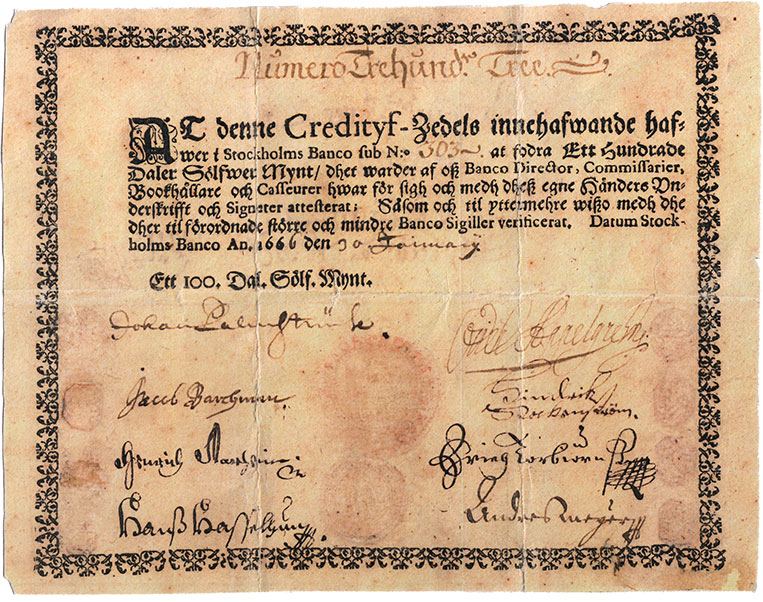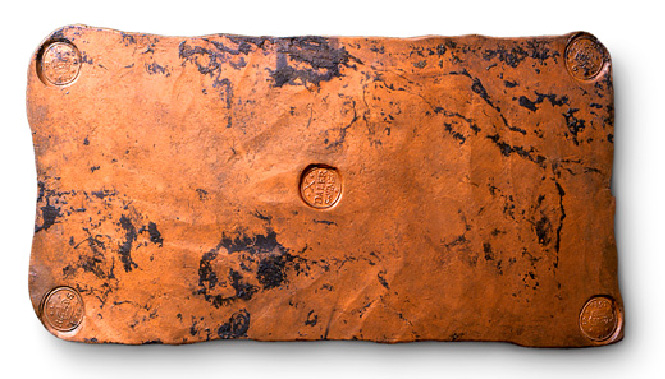Cité de l’Économie et de la Monnaie is to exhibit a facsimile, a gift by Stockholm’s Myntkabinettet, of one of the first ever European banknotes – a 100 daler note, issued by Stockholms Banco in 1666.
Banknotes first appeared in China around 1000 AD. They did not emerge in Europe until 600 years later, in Sweden.
As early as the beginning of the 17th century in the Netherlands, the Bank of Amsterdam began issuing bills to merchants in exchange for the deposit of cash, thus enabling them to trade amongst themselves without having to physically exchange their gold or silver coins, which remained at the bank. However, these bills were not yet banknotes in the strict sense of the word in that they had no impact on the amount of money in circulation: they were simple substitutes for the deposited coins.
In Europe, the first real banknote was issued in 1661 by Johan Palmstruch, the founder of Stockholms Banco, a private bank under State charter. Although the bank continued to guarantee repayment of the banknotes in cash, it no longer maintained strict parity between the amount of notes issued and the amount of cash deposited, as Johan Palmstruch considered it unlikely that all the holders of banknotes would ask to be repaid at the same time. And so the banknote was born, as a complementary means of payment to coins.
17th century Sweden’s monetary history largely explains this relatively premature emergence of the banknote in this country. The abundant supply of domestic copper produced by the Falun mines had led King Gustav Adolph to order the issuance of dalers, large copper coins. Competition from copper producers in the Far East then led to a depreciation in copper’s value as from the middle of the century, obliging the government to issue heavier copper coins to maintain the parity between copper and silver coinage. To do so, it forged huge sheets of copper, weighing up to 19kg or more for platmynts, which were worth ten silver dalers. Other sheets, worth two silver dalers, weighed in at more than 3kg. The inconvenient size and weight of these coins naturally encouraged their owners to deposit them with the banks and the banks to initially issue certificates of deposit, as in the Netherlands. These certificates would become banknotes as from 1661, when Johan Palmstruch decided to dissociate the amount of the notes issued by his bank from the amount of cash that his customers deposited.
While there are no remaining examples of the first banknotes from 1661, a few notes have survived from a slightly later issue, in 1666, including the 100 daler note mentioned above.
Excessive issuance of banknotes led Stockholms Banco quite rapidly into bankruptcy. In 1668, a new institution, Riksens Ständers Bank (the Bank of the Estates of the Realm, which would later become the Riksbank, Sweden’s central bank) was created to replace it, under the supervision of Parliament. Heedful of the experience of Stockholms Banco, however, the new bank refrained from issuing banknotes until the early 19th century.
For more information about the Myntkabinettet collections.
Published on 24 April 2013. Updated on 08 March 2022


